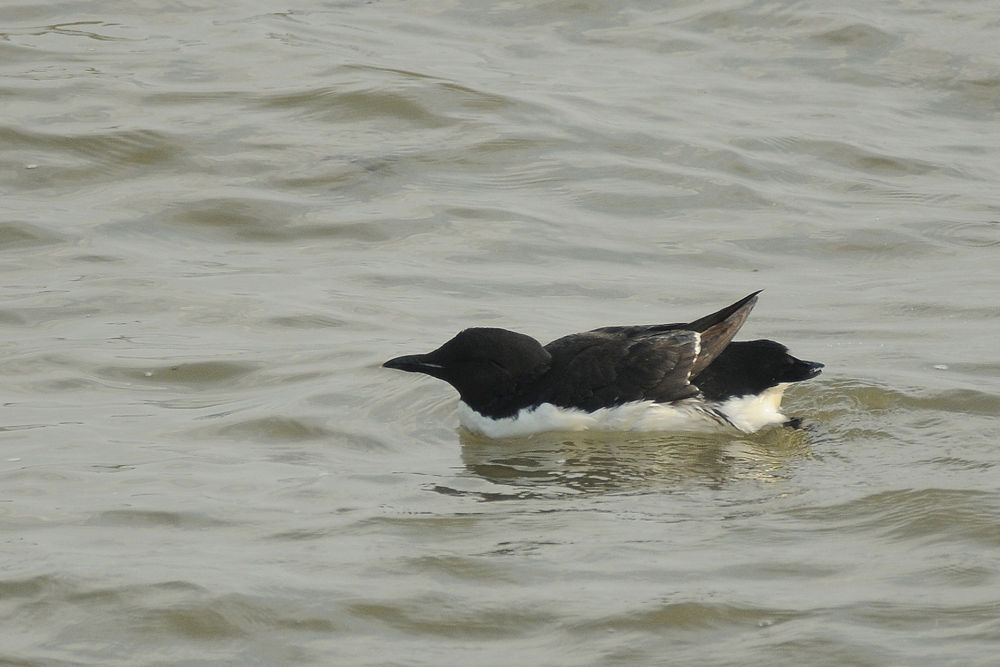
On Saturday 28 July 2012 at 16:40 hours Merel Zweemer and her friend Atze Witteveen returned from a walking trip to Schiermonnikoog by boat. Just before disembarkation Atze discovered a summer plumaged guiilemot swimming in the harbour and Merel quickly made three pictures. Already acquainted with Guillemots in Scotland, they tried to identify it with the Dutch version of the Collins Bid Guide and thought it could be a Thick-billed Murre Uria lomvia. They put the record on the online database waarneming.nl and asked for advice at 21:22 hours. There the very experiencied Frank Neijts red the topic and immediately thought it to be a Thick-billed Murre! News was spead on the Dutch Birding Rare Bird Alert at 22:05 hours.
Next days a large crowd gathered at Lauwersoog, but the bird was not present in the harbour, but the famous trio Nils van Duivendijk, Han Zevenhuizen and Jeroen de Bruijn (it is actually a quartet, but the fourth member Diederik Kok was abroad) relocated the bird at around 6:30 hours swimming 6 km east of the original spot. There the bird could be seen very well and at between 9:00 and 10:00 hours the bird came ashore and was resting for an hour before it returned to sea. The bird slowly moved out to sea and became invisible after 17:00 hours.
Between 300-400 birders came to visit this unfortunate bird and this sighting was very well received as long-time number one Gerard Steinhaus and former numer two, Klaas Eigenhuis had this species on their list since 1979, so a true blocker was 'unblocked'!

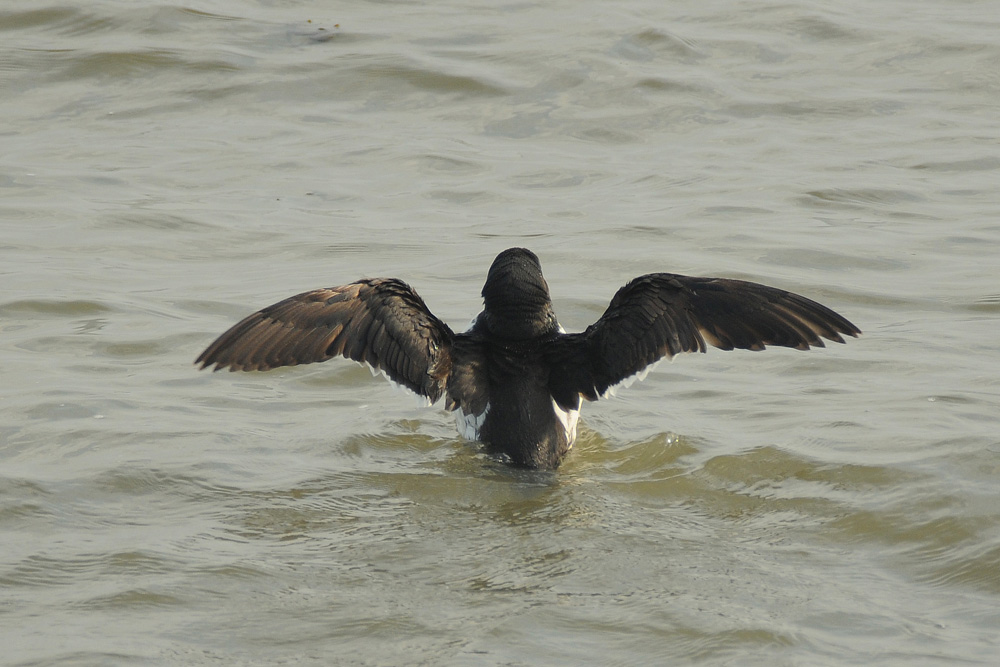
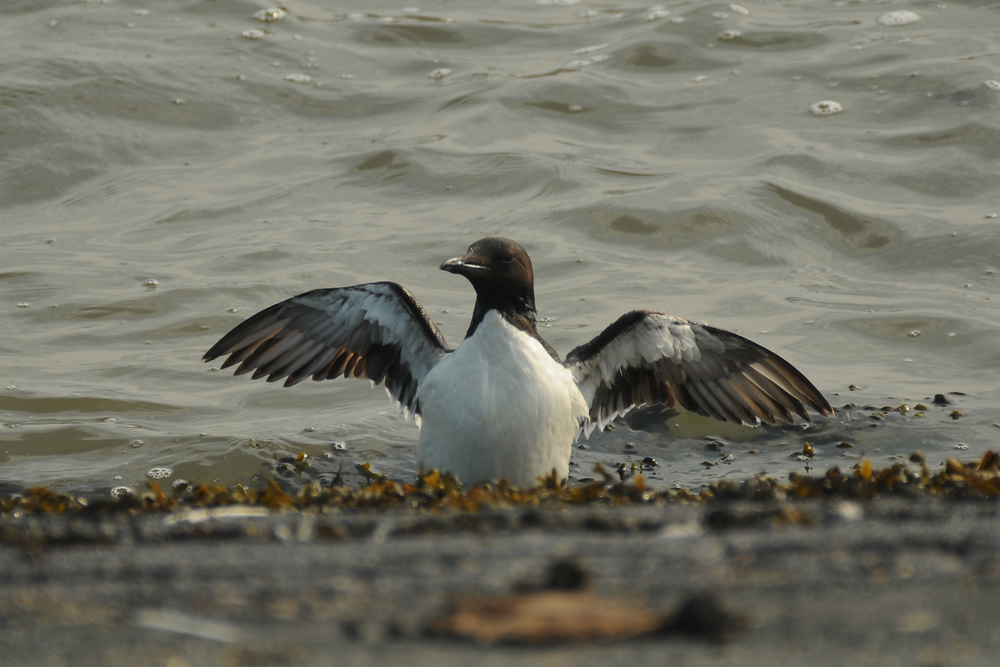
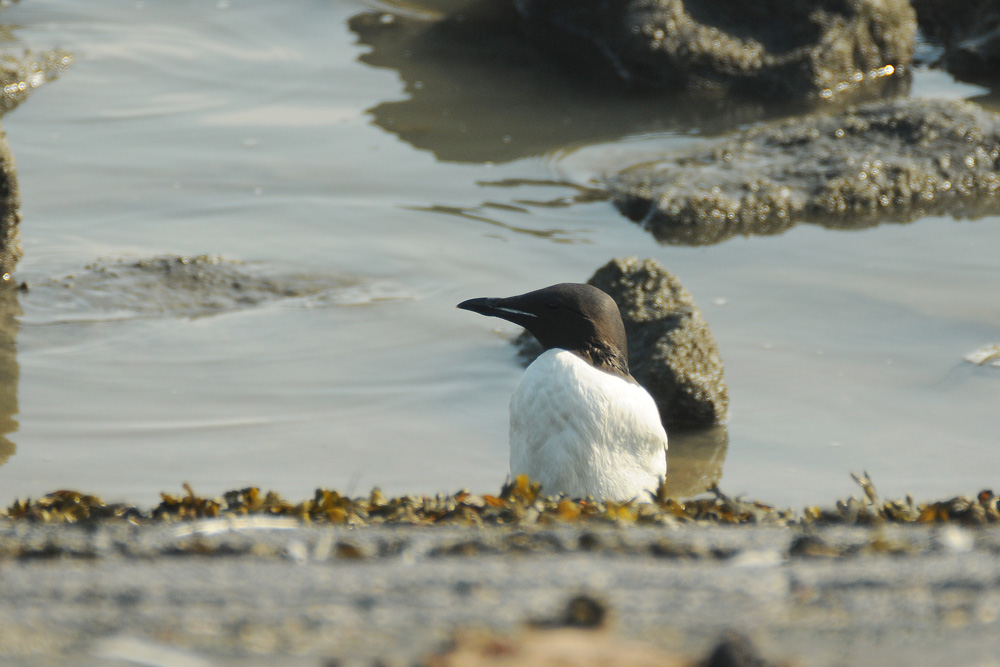
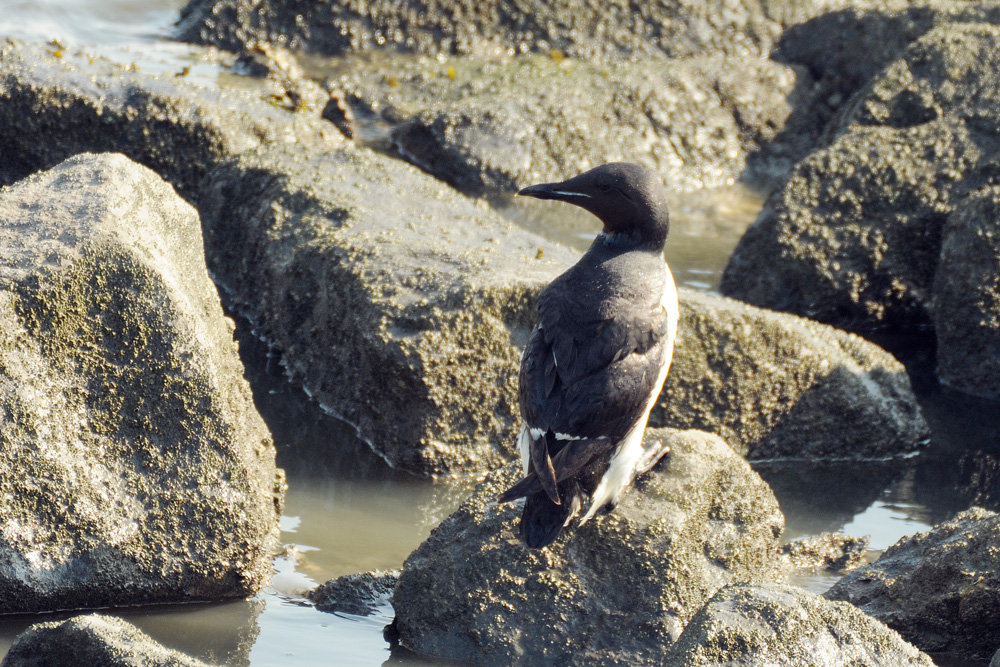
It was accepted as the ninth record for the Netherlands, the third bird seen alive and the first twitchable ever. Previous records were on 24 December 1919 at Noordwijk ZH, 28 December 1924 also at Noordwijk ZH (both skins retained in Naturalis, the National Natural History Museum in Leiden), 19 January 1969 on Texel NH (only skull retained in Naturalis), 10 March 1974 Veere Zld (found dead, skin formerly retained in ZMA Amsterdam, now in Naturalis, Leiden), 4 February 1979 Brouwersdam ZH (seen alive and found dead a few days later; skin formerly retained in ZMA Amsterdam, now in Naturalis, Leiden), 10 January 1981 Westland (found dead, skin in private collection), 18 April 1992 Texel NH (found dead by Kees Roselaar, skin formerly retained in ZMA Amsterdam, now in Naturalis, Leiden), and finally, 23 October 2005 Schiermonnikoog (the famous fly-by, at first not accepted, finally accepted in 2011).
Two weeks later, the bird re-appeared at Huisduinen NH on 11 August and stayed there till it most probably died on 13 August , when it's corpse was floating away out of reach of all birders...
Go to the main-index, the 2012-index or the next (sub)species the Caspian Stonechat?